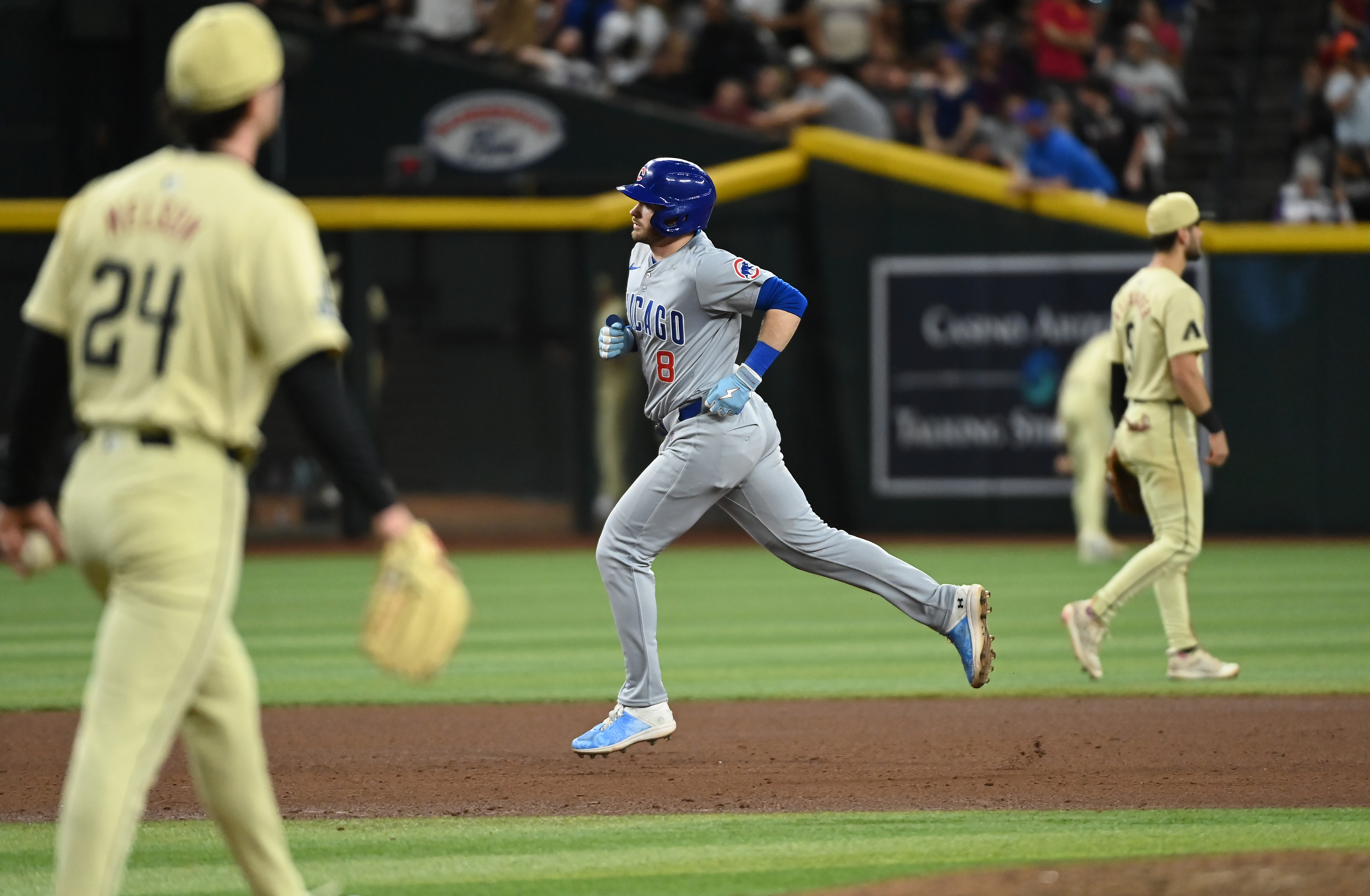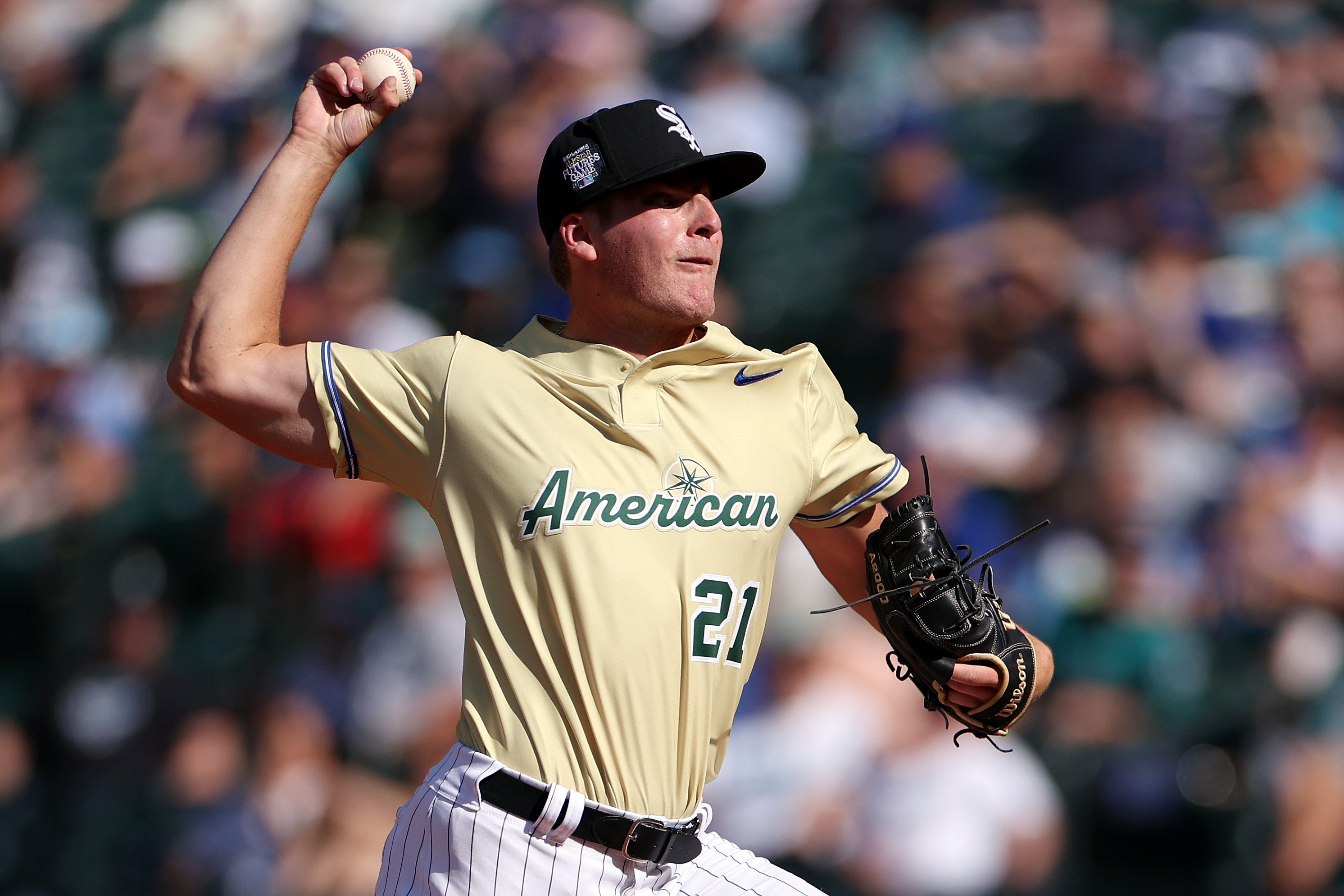
Jake Peavy's repeated it over and over. He's healthy, and he's ready to finally be the pitcher the Sox thought they were getting at the trade deadline in 2009.
But any skepticism regarding the 31-year-old coming into the season was warranted. He hasn't thrown more than 112 innings since coming to the White Sox, and he hasn't made 30 starts since he won the NL Cy Young in 2007. Along the way, he's shown flashes of his old self, but those have quickly been drowned out by injuries or ineffectiveness.
It'd be easy to simply say Peavy's first five start of 2012 are a return to his pre-2008 form. They're not. They're the beginning of the post-2011 Peavy.
Five years ago, Peavy was a blow-it-by-you pitcher with electric stuff. He averaged over nine strikeouts per nine innings from 2004-2007, featuring a fastball with an average velocity that crept into the mid-90's.
But a spate of injuries took some life off Peavy's fastball. His average velocity on that pitch dipped to 90.7 mph in 2011, which was the first year in which Peavy started to make a change in the way he pitched.
With his days of averaging a strikeout per inning gone, Peavy became extremely stingy with walks. He averaged just 1.93 walks per nine innings last season, a career best. Unfortunately, Peavy struggled with command, and a dead arm period didn't help. His ERA after 111 23 innings last year was 4.92.
But so far in 2012, it looks like Peavy has figured out how to be a different pitcher. His strikeout rate has remained consistent (7.66 K9 to 7.88 K9) while his walk rate has dipped a bit (1.93 BB9, 1.19 BB9) and he's doing an outstanding job of keeping the ball in the ballpark.
MLB
That Peavy's only allowed seven runs all year is a pretty good indicator that he's keeping the opposition off-balance, utilizing his repertoire to its fullest. Interestingly enough, Peavy's pitch selection isn't too far off from what he did in 2007, per FanGraphs:
YearFBSLCTCBCH200757.423.29.32.57.4201254.520.411.45.08.7
But Peavy's been hitting his spots and mixing these pitches better than he has since he joined the White Sox. His stuff isn't as good as it was five years ago, but he's adapted to it and, despite the same arsenal of offerings, become a different pitcher.
On the flip side...
Not everything is looking up for Peavy, though. He hasn't kept the ball on the ground, as 57 percent of the balls he's allowed to be put into play have been in the air. Only about 2 percent of those fly balls have gone for home runs, which isn't sustainable. If Peavy keeps allowing so many fly balls, eventually his luck will turn and more of them will go over the fence.
The good news is that Peavy's allowed one ground ball for every fly ball over the course of his career, so his high fly ball rate through five starts probably won't persist. But eventually, he will have to do something different, less he risk giving up quite a few home runs as the season goes on.
That's really the only real point of concern regarding Peavy's performance going forward. He's not going to sustain a 1.67 ERA, but a mark in the low-3.00 range is hardly out of the question.
Of course, if he stays healthy. That's going to be the issue for Peavy all season. He's proven, so far, that he can pitch like an ace. But, unfortunately, his injury-riddled past four seasons mean there always will be concern about a trip to the disabled list.
If Peavy can stay off the shelf, though, he looks primed for a fantastic season.


